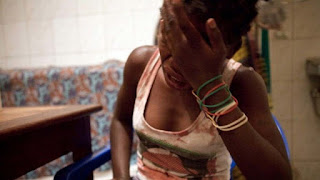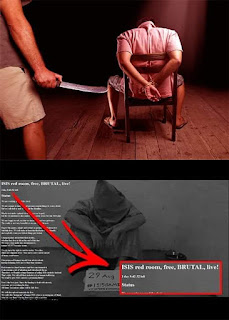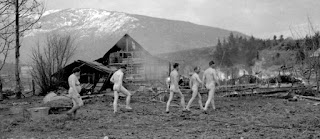Caroline Mary Luard
Caroline Mary Luard
Caroline Mary Luard (née Hartley; 1850 – 24 August 1908) was the victim of an unsolved murder, known as the Seal Chart Murder, after she was mysteriously shot and killed at an isolated summerhouse in a heavily wooded area near Ightham, Kent. Her husband, Major-General Luard, later committed suicide. It has since been suggested that John Dickman, who was hanged for killing a passenger on a train in 1910, may have been involved in her death
Caroline Luard was born Caroline Mary Hartley in the last quarter of 1850, in Egremont, Cumberland, youngest daughter of Thomas Hartley of Gillfoot. In the summer of 1875 she married Charles Edward Luard and had two sons by him – Charles Elmhirst Luard, born in August 1876, and Eric Dalbiac Luard, born April 1878. Elmhirst was the surname of Charles Luard's mother, while Dalbiac referred back to Charles's grandmother, Louisa Dalbiac (1761–1830), who had married Captain Peter John Luard (1754–1830) in 1784.
Charles Edward Luard, born in Edinburgh in 1837, was twelve years older than his wife. At the time of his birth his father, Tommy Luard, was a Captain in the Royal Artillery. Like many in his family, Luard was a professional Military Officer and had retired with the rank of Major-General in the Royal Engineers. He had done so despite an incident during his career that might have ruined his chances of promotion. This related to the defeat of British forces by the Zulu at the Battle of Isandhlwana in 1889, a reversal that was largely blamed on Colonel Anthony Durnford. However, it was rumoured that Durnford's orders had been stolen from his body after the battle, in order to absolve Lieutenant-General Frederic Thesiger, 2nd Baron Chelmsford and other senior officers of incompetence.
The fight to re-establish Durnford's reputation was led by his brother, Edward Durnford; Durnford's fiancée, Miss Frances Ellen Colenso, daughter of John William Colenso; the Bishop of Natal; and Charles Edward Luard. Luard made himself party to a letter-writing campaign, accusing fellow officers of a conspiracy to blacken Durnford's name. He was subsequently court-martialled and censured for his actions.
Luard had entered the army in 1859 and, in 1871, was executive officer in London during the Fenian disturbances. In the same year he wrote to the Commissioner of the City Police with a report on the defensive state of Newgate Gaol, following a visit there in the company of the Commissioner and the City Architect. The letter included a sketch plan for rebuilding part of the prison wall. He was involved in building the Household Cavalry barracks in Windsor and the United Services Recreation Ground in Portsmouth; it is also said that he devised the scheme for the rearmament of Gibraltar.
He served in Bermuda and Corfu as well as in Gibraltar and Natal. At the time of the 1881 Census he was living in Wymering, Hampshire with his wife and two young sons and a staff consisting of a cook, a parlour maid, and a nurse. Six years later he retired and in 1888 moved to a house named Ightham Knoll, just outside the village of Ightham near Sevenoaks in Kent.
Luard served as a Kent County Councillor and was made a Justice of the Peace. He became a Governor of Shipbourne School, close to his home, where he also performed the role of Local Inspector of Art and Drawing. In January 1899, he published a leaflet entitled ‘'An Association of the Managers and Governors of Schools for the Working Classes in the United Kingdom’', being a proposal for the establishment of such an association.
In 1901, he was heavily involved in the establishment of the Society of Miniature Rifle Clubs. This was because the Boer War had shown the vulnerability of the British Army to mere farmers who were able to shoot accurately from long distances. This led to Luard and Earl Roberts recommending that working men should be able to shoot a rifle, so that Britain could defend itself against invasion.
Luard also formed the Patriotic Party in 1907. His wife involved herself in charity work in the neighbourhood. It would be no exaggeration to say that they were pillars of late-Victorian society.
Both of the Luards' sons joined the British Army, both died young as a result of their service. Eric Luard died in 1903, while still in his mid-twenties, from a fever contracted while on service in Africa. His brother, Charles, died in France in September 1914.
The murder
On 24 August 1908, at about 2.30pm, Major-General Luard and his wife left their home and went for a walk with their dog. According to Major-General Luard's account, they had two very different purposes. He wished to retrieve his golf clubs from the clubhouse at Godden Green Golf Club prior to a holiday that he and his wife were intending to take, while Mrs Luard merely wanted to take some exercise before returning home where she was expecting a Mrs Stewart, wife of a local solicitor, for afternoon tea.
Accordingly, having walked about a mile from their home, along the road that passed close to St Lawrence's Church and the associated school, at 3.00pm they parted ways at a wicket gate. This gate let on to a path that led to a ‘bungalow summer house’ known as ‘La Casa’, owned by the Luards’ neighbours, the Wilkinsons of Frankfield House, and which both families were accustomed to using from time to time. Beyond the summer house was a path through the woods which would allow Mrs Luard to return home in good time for her visitor.
Major-General Luard, meanwhile, set off in the direction of the Golf Course and was seen at various times during the next hour. At 3.20pm, he was seen by Thomas Durrand at Hall Farm. Between 3.25 and 3.30pm, Major-General Luard was observed by a labourer some 400 yards from the golf links and again, by the same man, between 3.35 and 3.40pm. At 3.35pm, he was seen by the Golf Club Steward, on the links.
Having collected his clubs, at 4.05pm Major-General Luard met the local vicar, Rev. A. B. Cotton, who was in his motor car and apparently driving in the opposite direction. Cotton nevertheless took Luard's golf clubs, presumably to save him the trouble of carrying them any further and in the expectation of returning shortly in the right direction. This occurred at 4.20pm, when Rev. Cotton stopped to pick up Luard, depositing him and his golf clubs at Ightham Knoll at around 4.25pm.
At home Major-General Luard found Mrs. Stewart awaiting the return of Mrs Luard. Consequently, Luard set off in search of his wife by the woodland route, at approximately 4.30pm. He eventually found her, at about 5.15pm, on the verandah of the summer house which was otherwise locked and empty. She had been shot in the head, and her three rings and purse were missing. No cartridges were found at the scene, merely some “disappearing footprints”.
The time of Mrs Luard's murder was estimated to be 3.15pm, when Major-General Luard was walking towards the Golf Clubhouse. Three shots were heard at about that time by two witnesses – Annie Wickham (55), a long-standing local resident and wife of a coachman, and Daniel Kettel (58), a gardener. Annie claimed the shots came from the direction of the summer house. She was at the Wilkinsons' home at Frankfield House at the time – about 500 yards from the summer house.
.jpeg)











Comments
Post a Comment